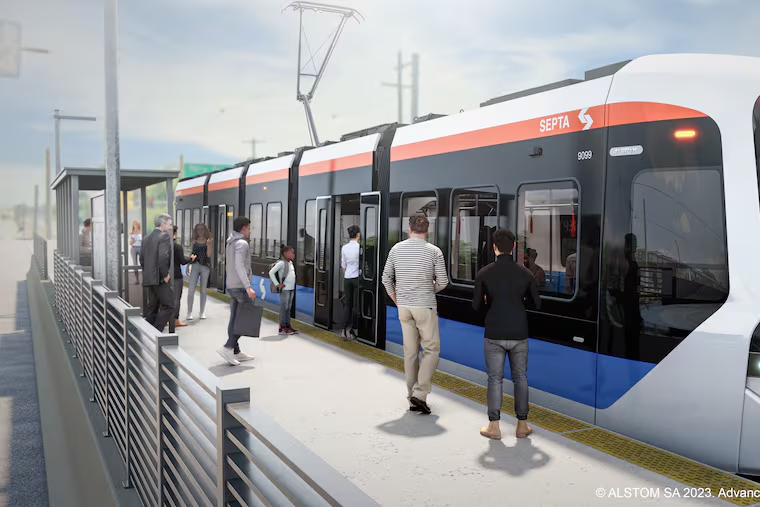SEPTA is spending up to $863 million for a new trolley fleet
SEPTA is ordering a new fleet of trolleys to replace the Kawaski cars currently operating, which are more than 40 years old. The new streetcars will be accessible to people with disabilities.

SEPTA will spend $714 million to replace its existing fleet of Reagan-era trolley cars under a deal the authority’s board of directors approved Thursday.
Alstom Transportation Inc. will build 130 new streetcars at its Hornell, N.Y., plant, where the company is also constructing high-speed train sets for Amtrak’s Acela service. SEPTA has an option in the contract to buy 30 more trolleys for $148.5 million if it chooses.
The rail-car order is a big step for SEPTA’s long-discussed $2 billion plan to modernize its eight trolley lines, vital transportation links for the city’s western and southwestern sections, parts of North Philadelphia, and Delaware County.
At the same meeting Thursday, the SEPTA board approved spending $125 million on final design work for the controversial King of Prussia Rail project.
“We have a once-in-a-generation opportunity right now with the federal funding levels available,” Jody Holton, chief planning and strategy officer, said in an interview. “We’re moving ahead and we expect that the state and region will continue to support these projects with additional funds.”
With low floors and ramp extensions, the new trolleys will be accessible to people with disabilities. They will be 80 feet long and comprised of several sections linked by joints that are covered with accordion-like weatherproofing.
They’re designed with 44 seats and able to hold as many as 120 people, counting people who stand to ride. The new cars will have wide aisles and room for wheelchairs, bicycles, and strollers, SEPTA officials said. The current Kawasaki LVR trolleys — used primarily West Philly and Delaware County — are squared-off 53-foot vehicles and can carry half as many passengers.
Riders must climb four steps to board those current trolleys, a barrier for many people with mobility issues and those wrangling groceries or young children. The modernization plan includes new street-level stations with shelter and stations with raised platforms.
SEPTA expects the first new trolleys to arrive in the winter of 2027, with all 130 scheduled to be in place by 2032, said Zachary Sullivan, chief engineering officer for new rail vehicles.
Philadelphia’s trolley network is the largest in the United States, though it has shrunk over the years from 69 miles in 1980 to about 40 miles currently. At one time, trolleys were everywhere in the city and many people have nostalgic feelings for the old-style form of transit.
Buses currently serve passengers on Route 15 along Girard Avenue as SEPTA refurbishes the 1947 PCC trolley cars that ran there. The transit agency hopes some of the historic vehicles will be back on Route 15 in the fall.
SEPTA estimates it will cost about $800 million to build the boarding platforms for the new system; make track adjustments; and replace the trolley poles used for power in the city. The new cars will use pantographs to get electricity from overhead catenaries.
The authority is negotiating to buy a Southwest Philadelphia industrial property valued at $21.8 million for a maintenance facility capable of handling the new, larger streetcars.
In 2021, SEPTA lost a bid to Amazon for an abandoned GE plant on Elmwood Avenue. Amazon has yet to begin operations at the facility, which would have housed a trolley barn had SEPTA’s $5.7 million offer been accepted.